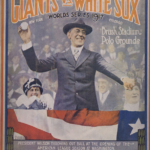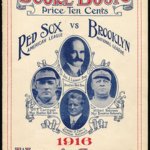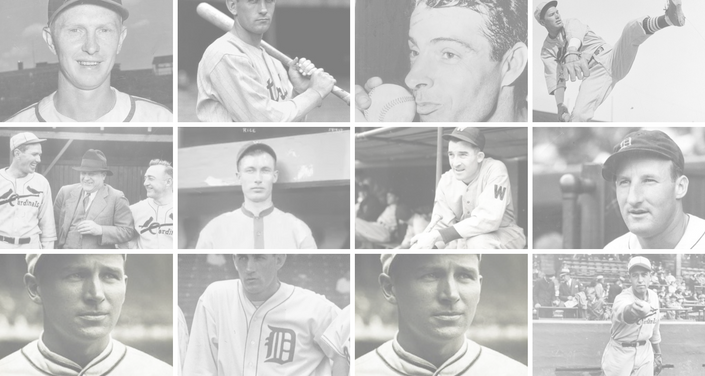For the New York Mets to stay with the Oakland A’s in the 1973 World Series surely would require an amazing effort by the National League champions.
The ’73 Mets, it turned out, were downright amazin’.
Manager Yogi Berra’s Mets had won the National League pennant in a fiercely contested five-game Championship Series against a seemingly superior Cincinnati Reds team. While that triumph boosted the Mets’ stock, the fact remained that Berra’s club had qualified for the NL playoffs despite barely finishing over the .500 mark. In a wacky does-anybody-really-want-to-win-this-thing race, the Mets had won the East Division crown with an 82-79 record. A juggernaut this was not.
The A’s had captured their third straight American League West championship and second consecutive AL pennant. They boasted big hitters in Reggie Jackson, Sal Bando, Gene Tenace and Deron Johnson, and 20-game winners in Jim (Catfish) Hunter, Ken Holtzman and Vida Blue.
New York’s Jon Matlack (14-16), one of only four pitchers in big-league history to start a World Series opener despite compiling a losing record in the regular season, pitched masterfully against the A’s in Game 1 — he allowed two unearned runs and three hits in six innings — but lost, 2-1. Matlack’s rival, Holtzman, worked five innings and got the victory. He even had a third-inning double.
Considering that AL pitchers didn’t bat during the ’73 regular season because of the introduction of the designated-hitter rule, Holtzman’s extra-base blow in the first Series at-bat by an A’s hurler was something of a stunner for the Mets, whose second baseman, Felix Millan, allowed Holtzman to score from second when Bert Campaneris’ ensuing grounder got through his legs. After Campaneris stole second, Joe Rudi rifled a run-scoring single.
Game 2 was the longest contest in World Series history in terms of the clock, lasting four hours and 13 minutes. The day must have been one of the longest in Mike Andrews’ life.
After Oakland rallied from a 6-4 deficit to tie the second game on two-out, ninth-inning singles by Jackson and Tenace, New York slipped ahead, 7-6, in the 12th on former Giants star Willie Mays’ single (the last hit of Mays’ 22-year major-league career, which was winding up where it started, in New York). Then, with the bases loaded later in the inning, A’s second baseman Andrews let John Milner’s grounder skip through his legs for a two-run error. Jerry Grote followed with another grounder to Andrews, whose poor throw pulled Tenace off the bag and enabled another run to score.
While the A’s battled back in the last of the 12th — they scored once and had the bases loaded with only one out — the Mets hung on for a 10-7 victory.
The day after Game 2, A’s owner Charlie Finley in effect “fired” Andrews with the announcement that he was deactivating the 30-year-old infielder. Finley tried to place Andrews on the disabled list, citing a shoulder injury, but Commissioner Bowie Kuhn — much to the delight of the Oakland squad — stepped in and ordered the A’s boss to reinstate Andrews.
Amid the Andrews drama, the fall-classic scene shifted from Oakland to New York and Dick Williams’ A’s regained the Series lead on Campaneris’ 11th-inning single in Game 3. The hit lifted the A’s to a 3-2 triumph in a game featuring terrific pitching by New York’s Tom Seaver, who struck out 12 batters in eight innings.
Mets right fielder Rusty Staub and Oakland’s Andrews got everyone’s attention in Game 4 — Staub by putting on a hitting clinic in the National Leaguers’ Series-squaring 6-1 victory and Andrews by merely being announced as a pinch-hitter. Staub belted a three-run homer in the first inning, drove in five runs and went 4-for-4 in support of Matlack’s three-hit pitching over eight innings. Andrews, back in uniform after the post-Game 2 brouhaha, received a rousing greeting from sympathetic New York fans before grounding out in an eighth-inning at-bat that proved to be his last trip to the plate in the majors.
The upstart Mets then went out and snatched the Series lead, getting a combined fifth-game shutout from Jerry Koosman (6 1/3 innings) and Tug McGraw, plus key extra-base hits from Cleon Jones and Don Hahn. Jones doubled in the second and scored on Milner’s single, while Hahn tripled home a run in the sixth. Blue and the A’s fell, 2-0.
Needing one victory in Oakland to cap an unbelievable season, the Mets started Seaver against Hunter in Game 6. Seaver allowed only six hits in seven innings, but two of the blows were run-scoring doubles by Jackson that staked Hunter to a 2-0 lead. Reggie, making up for lost time (an injury kept him out of the ’72 fall classic), singled and scored Oakland’s final run in the eighth as the A’s prevailed, 3-1.
New York’s hopes of springing a monumental upset were jolted early in Game 7 as Oakland rediscovered the long-ball aspect of its offense. Without a home run in the first six games against the Mets, the A’s got two-run shots from Campaneris and Jackson in the third inning-both homers were off Matlack-and rolled to a 5-2 victory. Holtzman notched the victory, although he needed help from Rollie Fingers, who appeared in six games of the ’73 Series, and Darold Knowles, who pitched in all seven contests.
Despite a second straight World Series championship, Williams walked away as A’s manager. While he reportedly had tired of Finley’s interference long before the Andrews turmoil and may have intended to quit anyway, Williams seemingly was pushed over the brink by the Andrews “firing.”
The A’s themselves had been pushed to the brink by a New York team that was amazin’ almost to the very end.




